|
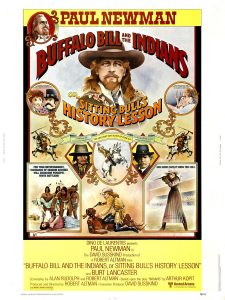
Synopsis:
With the help of his producer (Joel Grey), publicist (Kevin McCarthy), and relative (Harvey Keitel), William ‘Buffalo Bill’ Cody (Paul Newman) hires Sitting Bull (Frank Kaquitts) to be part of his popular traveling show, which also features sharp-shooter Annie Oakley (Geraldine Chaplin) and her husband (John Considine). But Sitting Bull — speaking through his agent (Denver Pyle) — has different ideas for his act, and is a source of constant consternation to Cody.
|
|
Genres, Themes, Actors, and Directors:
- Burt Lancaster Films
- Geraldine Chaplin Films
- Harvey Keitel Films
- Historical Drama
- Kevin McCarthy Films
- Native Americans<
- Paul Newman Films
- Robert Altman Films
- Shelley Duvall Films
- Westerns
Review:
Robert Altman’s follow-up to Nashville (1976) was this revisionist western — loosely based on Arthur Kopit’s play Indians — about spectacle, celebrity, and myth-making in late 19th century America. Unlike the character played by Joel McCrea in William Wellman’s Buffalo Bill (1944), Newman’s Cody is openly disparaging of Indians, and only interested in using them to further his own fortune. Indeed, Newman is presented as a wig-wearing narcissist who believes his own legend, has a buffoonish lust for busty operatic singers (Noelle Rogers and Evelyn Lear), and wants to deliberately avoid the man (Burt Lancaster) responsible for sparking his fame. Filmed on location at Stoney Indian Reserve in Alberta, Canada, the production looks great, and features Altman’s characteristically innovative directorial style. Memorable moments include an extended sequence in which President Grover Cleveland (Pat McCormick) and his new wife (Shelley Duvall) are given a special viewing of the show on their honeymoon, and the President refuses to hear Sitting Bull’s “one simple request”:
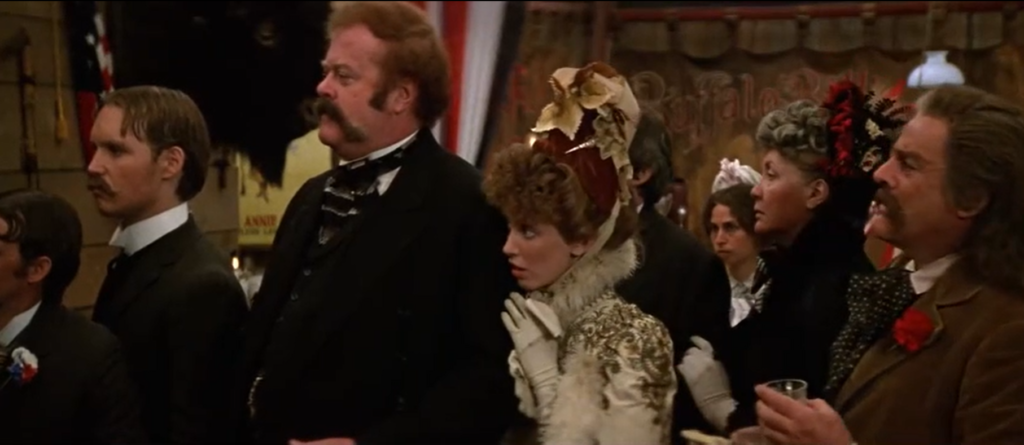

This heartbreaking depiction of our country’s literal silencing of Indians makes its point clearly. I’m also fond of scenes featuring Chaplin as the fiercely talented and self-competitive sharp-shoot Annie Oakley — but other elements of the film are less successful, and Newman’s final soliloquy seems ill-suited at best.
Redeeming Qualities and Moments:
- Geraldine Page as Annie Oakley
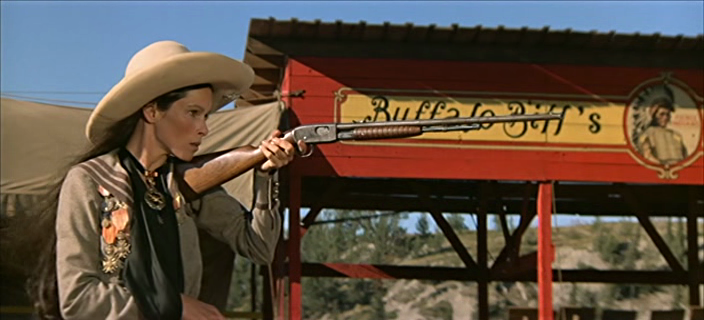
- Excellent period sets
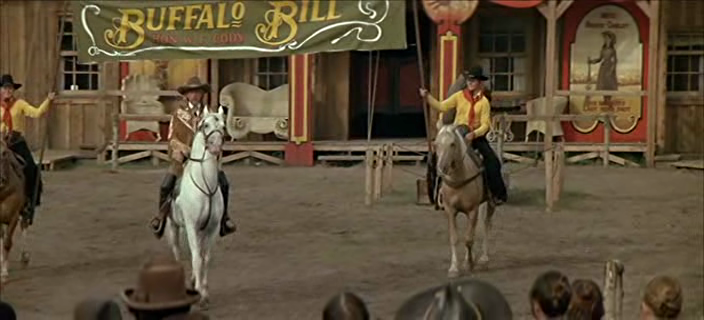
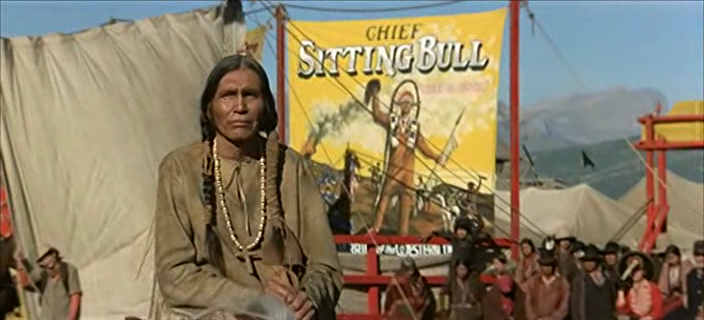
- Fine cinematography and direction
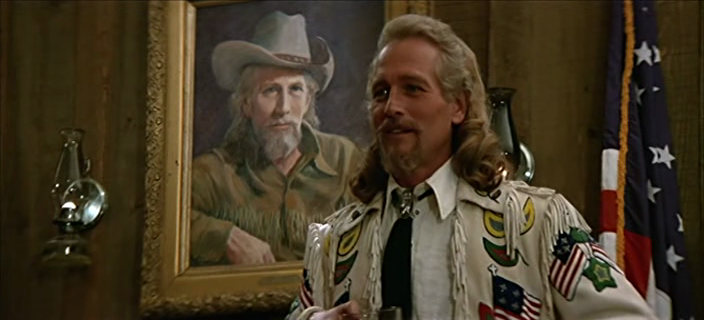
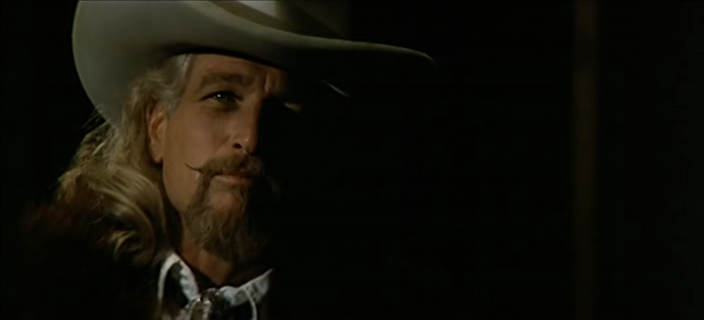
Must See?
No, though it’s certainly worth one-time viewing, especially for fans of Altman’s work.
Links:
|








One thought on “Buffalo Bill and the Indians, or Sitting Bull’s History Lesson (1976)”
Not must-see.
I’d only seen this once before – on its release – and, at the time, I found it unsatisfying. Since 1976 was a bicentennial year, it was…kind of…interesting (though not totally unexpected) that Altman would put forth an anti-patriotic view. But the film (based on the Kopit play I had read) seemed a muddle.
It still does – though less of one, particularly if you have just seen Wellman’s ‘Buffalo Bill’, as I have. It’s fascinating to note the stark contrast of the two films. But it also becomes frustrating when Altman’s film doesn’t live up to its ambition.
That’s mainly because of its real lack of narrative drive (which becomes much more apparent in the film’s second half). Those who are big Altman fans (as I am, overall) don’t tend to mind his disinterest in narrative thrust – the director tends to be more interested in character than story. And that’s fine if the story isn’t all that dependent on plot. (‘Nashville’ – released the same year – is virtually a plot-free mood-piece and it doesn’t hurt the character-based film one bit.)
But this film is asking for more of a plot – in the sense that we want to see a more systematic debunking of the Buffalo Bill who is set up in Wellman’s revisionist version. And we don’t see nearly enough of that here – even though it’s implied that we will.
What we’re left with: some very strong scenes, esp. in the first half…and a slow descent into a film that simply appears to run off-course.
Overall, however – the performances are fine; the actors can’t be faulted in their attempt at being in the spirit of it all. Newman, in particular, seems very focused and is effective throughout – even when the script isn’t helping him more. (I also like Grey’s solid turn in a supporting role, as well as seeing Keitel being so comfortable playing against type.)